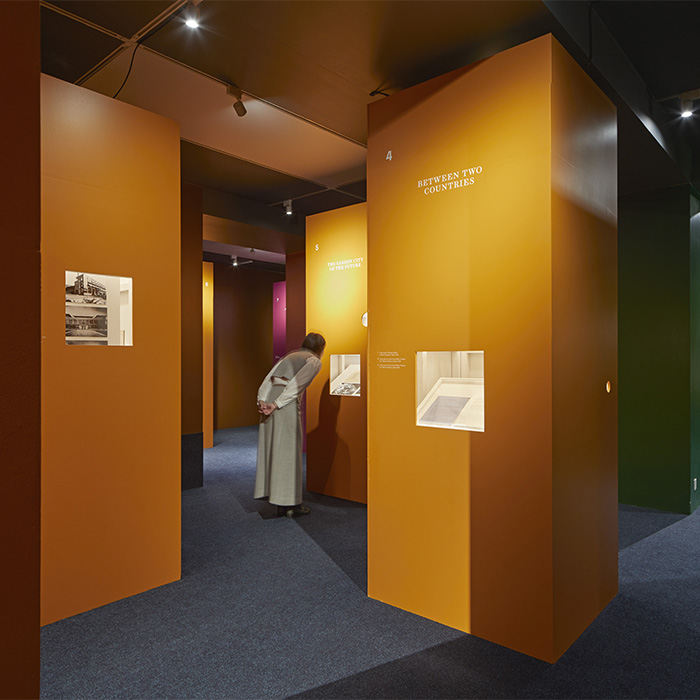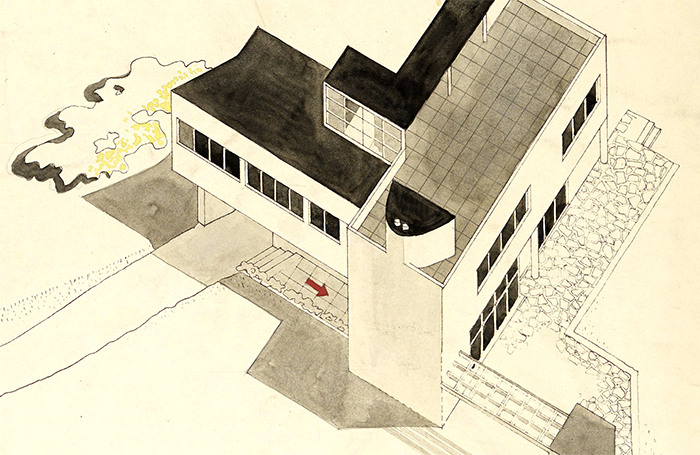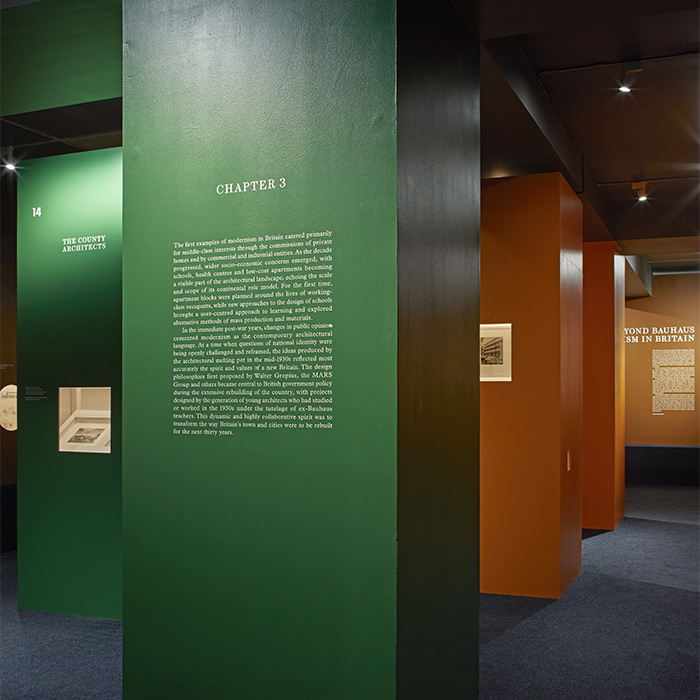Our latest exhibition Beyond Bauhaus – Modernism in Britain 1933-66 begins in the year the famous German Bauhaus School closed and examines the moment when three former Bauhaus tutors – Walter Gropius, Marcel Breuer, and Laszlo Moholy-Nagy – left Germany to settle in the UK. The three brought with them modernist thinking and new architectural ideas that were to greatly influence the minds of many young British architects. Although some traces of modernism could already be seen in buildings across the country, their arrival – alongside other émigrés, including Russian Bertold Lubetkin and Hungarian Ernö Goldfinger – helped galvanise enthusiasm and confidence for the modernist cause, and for a brief period, Britain became the epicentre for contemporary architecture.

We are very fortunate to hold archive material of the three ex-Bauhaus tutors, including working drawings by Gropius and Breuer created during their short stay as practicing architects in England. These works have rarely been seen in public and the Bauhaus centenary provides the perfect backdrop for bringing them out to a wider audience. Our exhibition draws almost exclusively on the RIBA Collections and includes original drawings, photographs and models, plus examples of personal correspondence, ephemera, and films. The depth of our collections has allowed the exhibition to add new and neglected narratives to the history of modernism in Britain, offering opportunities for contemporary comparison and reflection. Little known or rarely shown works by Mary Crowley, Elizabeth Denby, Sadie Speight, Norah Aiton, and Betty Scott demonstrate the importance and eagerness of female architects to engage with the ideals of the modernist avant-garde.

The exhibition is divided into three chapters. The first demonstrates the collaborative spirit of the period. It showcases the various ways in which ideas were exchanged and the personal connections and relationships forged between British architects, including Maxwell Fry, FRS Yorke, Wells Coates, Mary Crowley and Norah Aiton, and their European counterparts. It covers the period when British architects first encountered Bauhaus employees at the CIAM (International Congresses of Modern Architecture) conference in Athens in 1933 to the moment when Gropius, Breuer, and Maholy-Nagy left Britain for the United States in 1937.
The second chapter explores the English school of modernist architecture, developed during the 1930s through the designing and building of private houses. This area shows the range of style influences at play during the decade and illustrates how British architects began designing the modern interior, expanding the role of the architect in line with the cross-disciplinary approach of the Bauhaus school.
Moving beyond the domestic interior, the final chapter illustrates the broader ambitions of modernist architects and the first tentative steps towards larger scale, more sociologically minded, projects. Covering the period of mid 1930s to late 1960s, this section concludes with a reflection on the subsequent projects of architects such as Eric Lyons, Denys Lasdun, and Mary Crowley (later Medd) alluding back to their formative pre-war years. These were leading innovators in post-war British architecture, whose formative years were spent as junior architects in the pre-war offices of Gropius, Fry, Goldfinger, and Coates.

The Bauhaus school famously taught across various design disciplines, including industrial design, architecture, textile, craft and costume design, but the school was also instrumental in rethinking exhibition design, staging seminal shows of their own work. This cross-disciplinary approach has informed the installation design of Beyond Bauhaus, produced by Chilean studio Pezo von Ellrichshausen. The gallery space has been transformed into a dense, colonnaded room featuring a bold palette of secondary colours – as opposed to the classic Bauhaus red, yellow, and blue – alluding to the assimilation of the school’s ideals in a new cultural context. The columns act as individual ‘archives’, each containing works from the RIBA collections, revealing the narrative to visitors as they explore the labyrinth-like installation.
Discover our upcoming Beyond Bauhaus events and visit the exhibition for free (no need to register) Monday to Saturday 10am to 5pm, Tuesday until 8pm, at 66 Portland Place.
Words by RIBA Curator Pete Collard.









